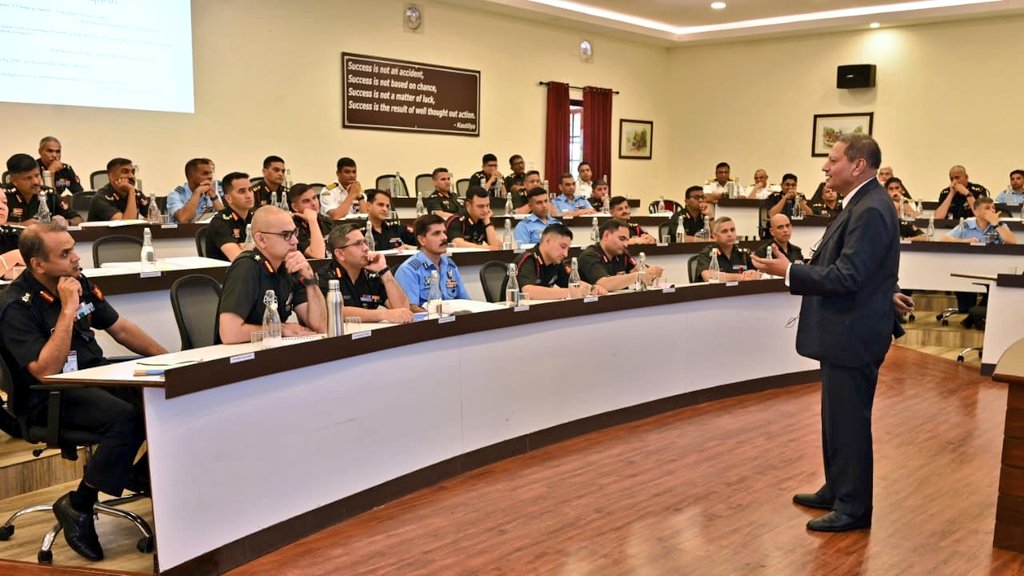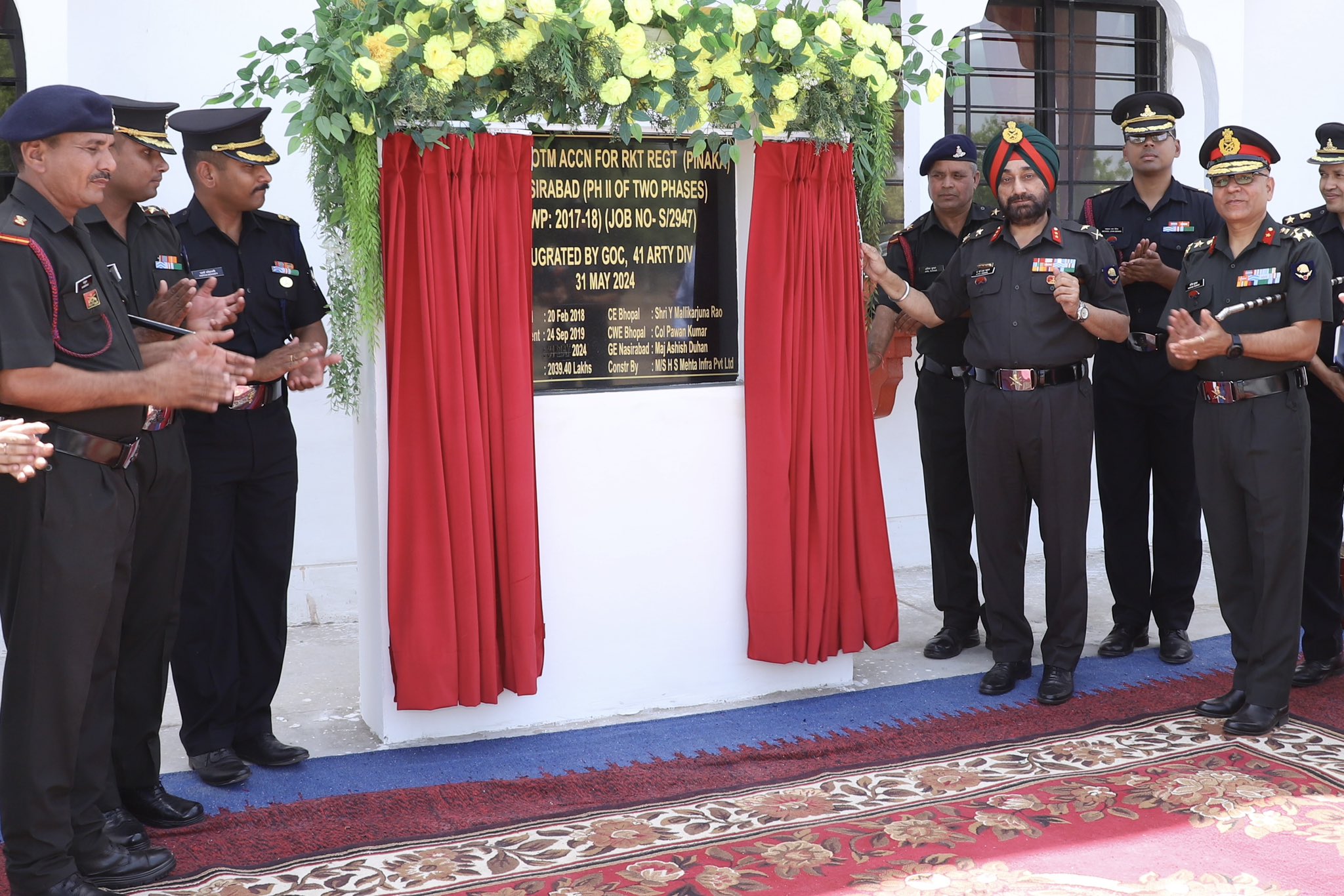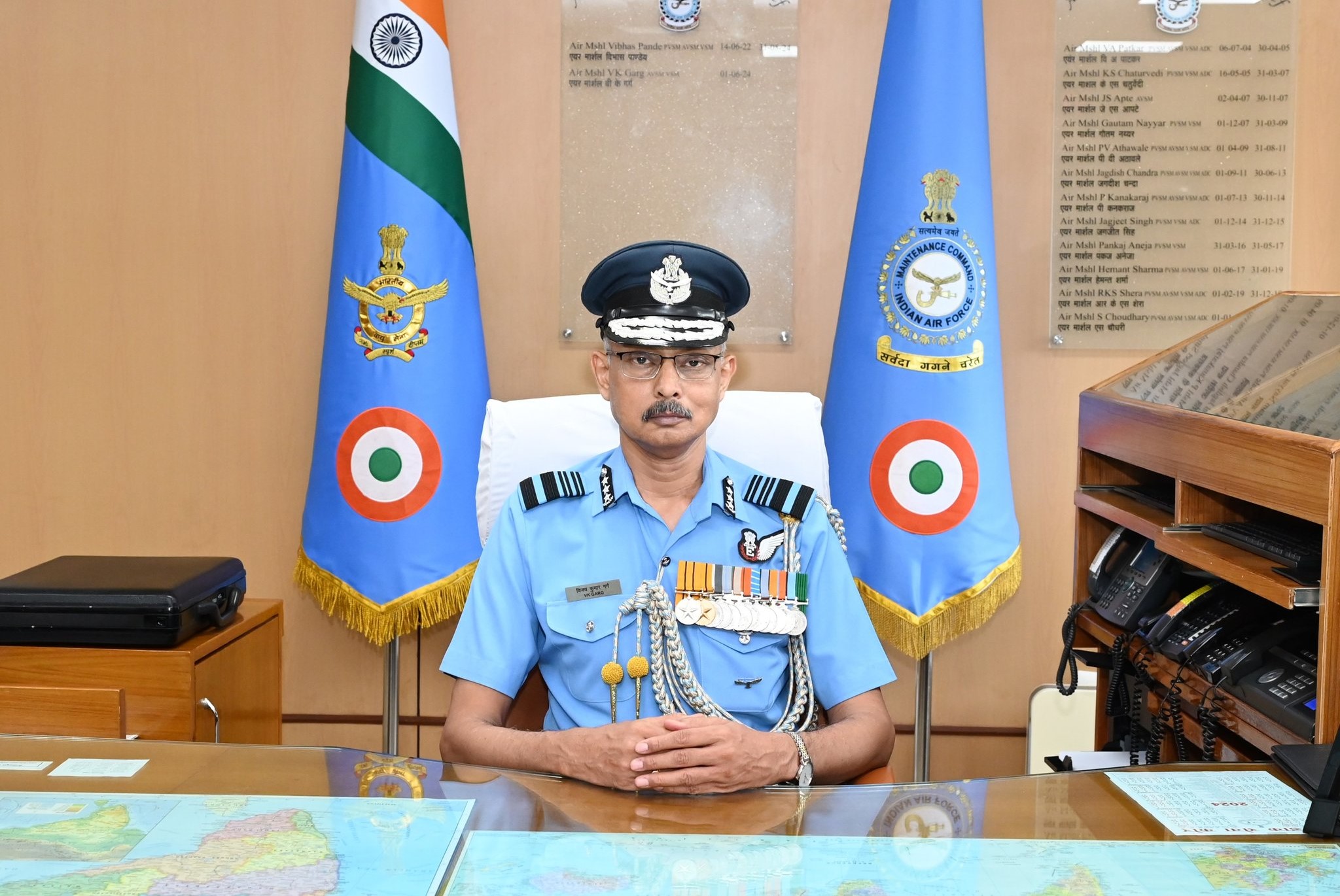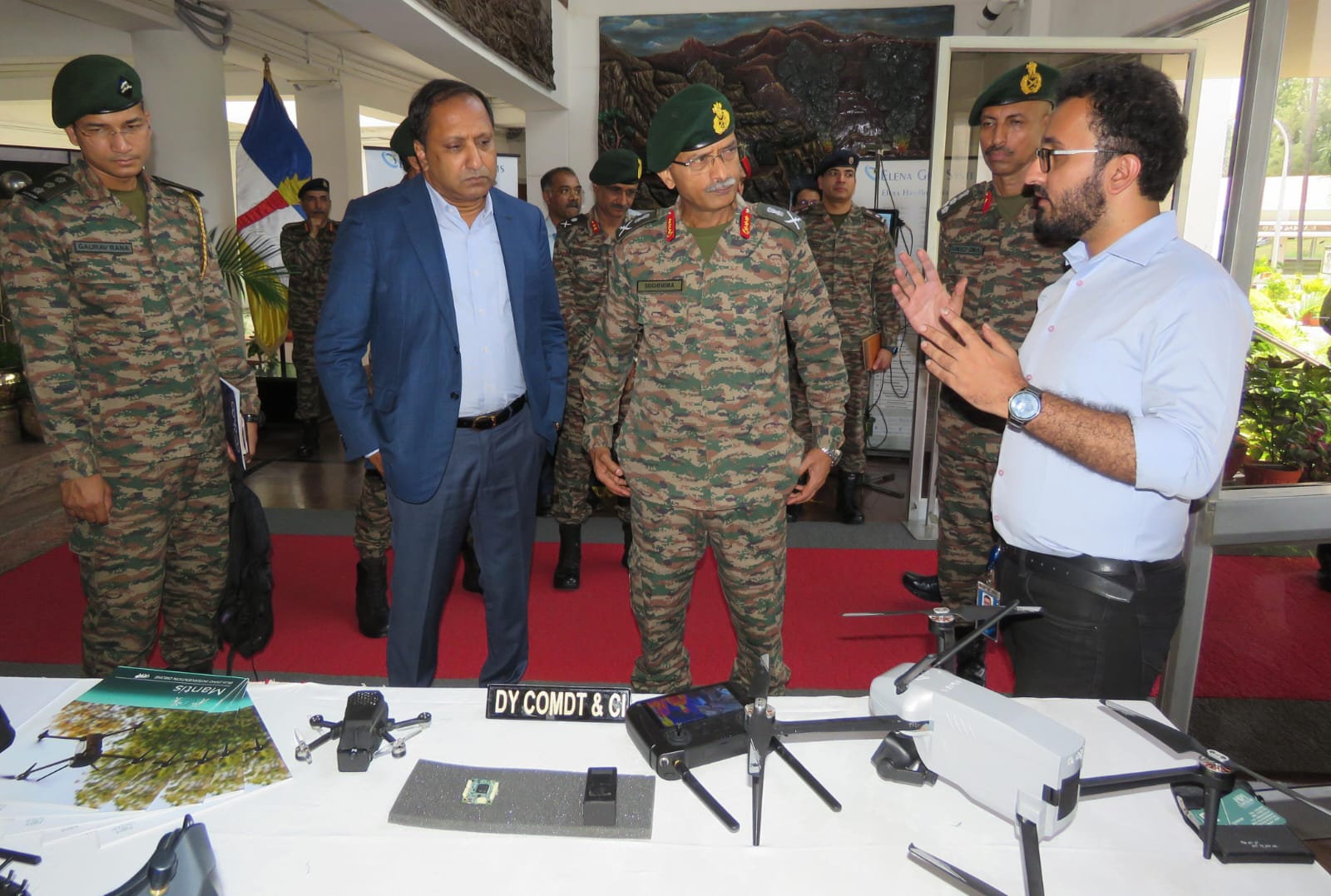Faculty Development Programme at DSSC Wellington Sets the Stage for Staff Course – 80
The Defence Services Staff College (DSSC), Wellington, recently hosted a comprehensive Faculty Development Programme (FDP) as a precursor to the…
Igniting Scientific Curiosity: Maj Gen APS Chahal Inaugurates Brain Science Lab at Ghatak Strikers Brigade
Maj Gen APS Chahal, General Officer Commanding (GOC) of the Agnibaaz Division, made a significant visit to the Ghatak Strikers…
Air Marshal Vijay Kumar Garg Takes Over as AOC-in-C Maintenance Command
Air Marshal Vijay Kumar Garg assumed the role of Air Officer Commanding-in-Chief (AOC-in-C), Maintenance Command, on 1st June 2024. Commissioned…
Lt Gen MV Suchindra Kumar Visits SSS Defence Industries in Bengaluru
Lt. Gen. M.V. Suchindra Kumar, the Army Commander North, recently visited Bengaluru's prominent industrial partners, Tonbo Imaging India Private Limited…
Lt Gen MV Suchindra Kumar Visits ASC Centre & College, Reviews Regional Technology Node-Bengaluru
Lt Gen MV Suchindra Kumar, Army Commander Northern Command, conducted a significant visit to the Army Service Corps (ASC) Centre…
OTA Gaya Passing Out Parade to be Held on 8th June 2024
The Officers Training Academy (OTA) in Gaya is set to host its prestigious Passing Out Parade (POP) on the 8th…





